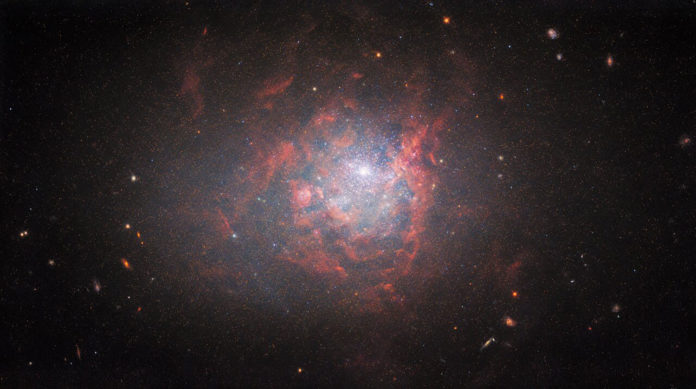NASA/ESA Hubble Space Telescope revisits the dwarf galaxy NGC 170, a cosmic oddball that has recently undergone a spate of star formation called a starburst. Located almost 17 million light-years away, the galaxy is an ideal laboratory to investigate the history of star formation.
This ‘starburst’ is responsible for many of the young stars on the outskirts of this galaxy’s core, as well as the central giant star cluster.
Dwarf irregular galaxies like NGC 170 can offer valuable insights into the overall evolution of galaxies. These types of galaxies are considered to be similar to the earliest galaxies that populated the Universe.
The galaxy hosts young, blue, hot stars at its center. Older, red, cooler stars are more spread out.
By observing a specific wavelength of light known as H-alpha with Hubble’s Wide Field Camera 3, astronomers aimed to discover thousands of emission nebulae — regions created when hot, young stars bathe the clouds of gas surrounding them in ultraviolet light, causing them to glow.
Before this, Hubble explored NGC 1705 in 1999 using Hubble’s workhorse camera, the Wide Field Planetary Camera 2. The Wide Field Camera 3 replaced this instrument during the fifth and final Space Shuttle mission to Hubble in 2009. It has provided a richer and far more detailed portrait of NGC 1705 than the 1999 observation.
